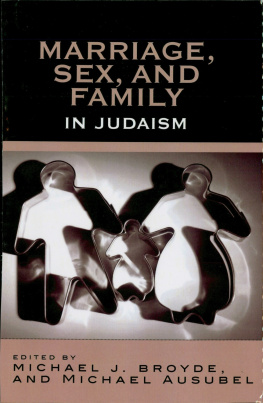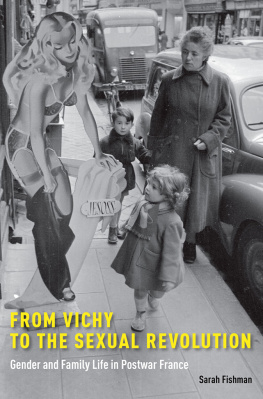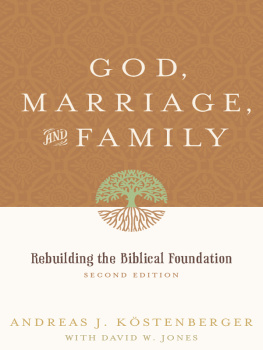MEN AND MARRIAGE

Copyright 1986
By George Gilder
All rights reserved
First paperback edition, June 1992
Second printing, June 1993
Third printing, January 1995
Fourth printing, March 2001
Fifth printing, August 2008
This book is a revised and expanded edition of Sexual Suicide 1973, published by Quandrangle/The New York Times Book Company
Library of Congress Cataloging-in-Publication Data
Gilder, George F., 1939
Men and marriage / George Gilder. -- 1st pbk. ed.
p. cm.
Rev. and expanded ed. of: Sexual suicide. 1973
Includes bibliographical references.
ISBN 978-0-88289-946-6 (pbk.)
ISBN 9781455608782 (ebook)
1. Sex customs--United States. 2. Family--United States. 3. Love. 4. Sex role--United States. I. Gilder, George F., 1939-Sexual suicide. II. Title.
[HQ18.U5G55 1992] 92-12854
306.850973--dc20 CIP
Printed in the United States of America
Published by Pelican Publishing Company, Inc.
1000 Burmaster Street, Gretna, Louisiana 70053
Contents
To my Mother and Gilly
Preface
to the Revised Edition
Men and Marriage is a revised edition of Sexual Suicide, my book on the drive to deny and repress the differences between the sexes. It is also about the redemptive joys and crucial functions of marriage and family, the roots of human civilization.
In a sense the project began some thirteen years ago in the July 1973 issue of Harpers magazine, when I was first plunged into the maelstrom of emotions and ideologies surrounding sex. In a cover story entitled The Suicide of the Sexes, adroitly excerpted by editor Nelson Aldrich, I declared that the differences between the sexes are the single most important fact of human society. I asserted that the drive to deny themin the name of womens liberation, marital openness, sexual equality, erotic consumption, or homosexual romanticismmust be one of the most quixotic crusades in the history of the species. The response reverberated indignantly in hundreds of letters to the magazine and scores of reviews of the book.
I later wrote other books that drew on the themes of Sexual Suicide. First was Naked Nomads, an extended essay on unmarried men. Then followed Visible Man, a nonfiction novel about demoralization and violence in the welfare culture, and Wealth and Poverty, a worldwide best seller on capitalism and supply-side economics that also continued my family theme in several chapters. After Wealth and Poverty brought publishers galore to my door, offering me large sums for new works, I thought it would be opportune to republish Sexual Suicide, the book where it had all begun. Indeed, several prominent publishers did offer to reissue the book. But in every case they called back later to tell meor imply stronglythat protests from feminist editors had balked them. Finally Milburn Calhoun of Pelican Publishing Company of New Orleans asked to publish an updated version. A brave man, he rushed in where all the New York publishers feared to tread. He also assigned me a trenchant and punctilious editor, Frumie Selchen, who helped shape the project to the end.
As I sat down to the editing job, though, I realized that it was too late to republish the book without substantial revision. The radical feminist movement, once a dominant force in the nations affairs, had suffered serious setbacks. The more obviously extreme figures, much assailed in Sexual Suicide, no longer command serious attention. While Kate Milletts Sexual Politics gained an almost unprecedented two-part rave from Christopher Lehmann-Haupt in the daily New York Times, her subsequent celebrations of lesbianism were largely dismissed. Germaine Greer rode the best-seller list for months with The Female Eunuch, but Sex and Destiny, her pronatalist near-recantation, was little noticed. Defeat of the Equal Rights Amendment broke the movement into several warring factions. Indeed, The New York Times Magazine, in a long and agonized report, embalmed feminism on the campuses, the unreal world in which it always flourished best. Even Betty Friedan, who had launched the movement as an intellectual force with her book The Feminine Mystique, declared herself in favor of the nuclear familypreviously denounced in the pages of the Times as a cradle of evil.
As a critique of the feminist movement and its politics, Sexual Suicide now seems less telling. But the central themes of the book remain vitally important. Though rejecting feminist politics and lesbian posturing, American culture has absorbed the underlying ideology like a sponge. The principal tenets of sexual liberation or sexual liberalismthe obsolescence of masculinity and femininity, of sex roles, and of heterosexual monogamy as the moral normhave diffused through the system and become part of Americas conventional wisdom. Taught in most of the nations schools and colleges and proclaimed insistently in the media, sexual liberalism prevails even where feminismat least in its antimale rhetoricseems increasingly irrelevant.
Rather than expressing hostility to men and masculinity, sexual liberals simply ignore or deny male nature. Encouraged by male feminists writing books about the male mystique and the myth of masculinity, American intellectuals and social scientists reduce manhood to androgynous mush. With men seen longing for the right to cry or to stay home and nurture children, virility becomes a mere derivative of femininity. As Steven Goldberg has remarked, masculinity is treated like sex in Victorian England: a fact of life that the society largely condemns and tries to suppress and that its intellectuals deny. And as in Victorian England, when suppression of sex led to an efflorescence of lurid flowers in the secret gardens of society, so the denial of male nature in modern life warps and perverts the natural play of male aggression, leading to violence and pornography, to fear and exploitation of women, to the quest for potency through drugs and alcohol, to punch-drunk music, and to fighting at sports events. Millions of men feed on the masculinity of a few heroesboxers, football players, rock stars, entrepreneurs, macho film and TV avengers.
The result is a society that at once denies the existence of natural male aggressiveness and is utterly preoccupied with it. While academic intellectuals and media sociologists ruminate on the feminized new man, male aggression and violence, muscles and madness, guns and technologies animate our movies, TV shows, magazines, newspapers, politics, music. From Patton to Bond to Rocky to Rambo to Conan the Barbarian and scores of imitatorsfrom Mick Jagger to Bruce Springsteenthe popular culture reeks and reverberates with male aggression. From hijacker threats to guerrilla terror, our public life revolves around male violence. Our city streets quail before it. Our city schools are paralyzed by fear of it. Liberated women are obsessed by it, laboring through hours of karate, declaring a national crisis of battered wives, palavering endlessly through rap sessions on rape. All the while, most academic theorists maintain that men could be mild and maternal if somehow the culture would socialize them like women.
The imperious power and meaning of male sexuality remains a paramount fact of life and the chief challenge to civilized society and democratic politics. Failing to come to terms with masculinity, a society risks tearing its very ligaments, the marriage and family ties that bind men to the social order. For it is only their masculinity, their sexual nature, that draws men into marriages and family responsibilities. When our social institutions deny or disrespect the basic terms of male nature, masculinity makes men enemies of family and society.
Next page
![George Gilder Men and Marriage [Sexual Suicide]](/uploads/posts/book/87550/thumbs/george-gilder-men-and-marriage-sexual-suicide.jpg)









